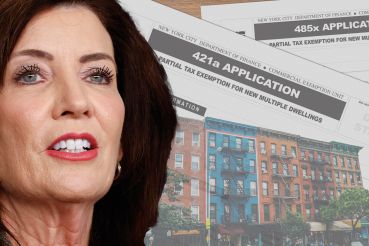
Investment sales activity in the first half of 2010 (1H10) showed significant improvement over its performance in 2009. In hindsight, it is clear that the market has passed its bottom in terms of a low point in sales activity. However, the market is still struggling to find a bottom in terms of pricing, as various sectors in different submarkets are moving in different directions.
In 1H10, there were $6.488 billion in aggregate sales consideration, up 131 percent from the $2.8 billion in sales recorded in the first half of 2009 (1H09). More importantly, this level of activity already exceeds the $6.26 billion recorded in all of 2009. In the second quarter of 2010 alone, sales volume was approximately $4.1 billion, the highest quarterly total seen since the third quarter of 2008, when $8.14 billion was closed.
VIEW SLIDESHOW > RELATED STATISTICS
Although these are extremely positive occurrences for the marketplace, it is interesting to remember that total sales volume in 1H10 remains 82 percent below the market peak in 1H07, when $35.8 billion of investment property transactions closed.
In 1H10, the average sales price for a New York City building reached $7.9 million. This is up significantly from the $4.4 million average in 2009, and approaches the 2008 average of $8 million. At the peak in 2007, the average price of a property sold in New York City attained a record $12.4 million.
In 1H10, on a percentage basis, the northern Manhattan submarket had the largest increase in volume, with $325.4 million in sales, up 180 percent from 1H09. This was followed closely by the $5.2 billion sales in the Manhattan submarket, up 170 percent from 1H09. (Our Manhattan and northern Manhattan submarkets are delineated by 96th Street on the East Side and 110th Street on the West Side.)
The activity in the Brooklyn submarket showed a large swing, with $333 million in sales volume in 2Q10 alone. With $495 million in sales, Brooklyn was up 60 percent from the 1H09.
In 1Q10, the Queens market showed a decrease in sales volume from 2009 totals; however, a strong second quarter pushed Queens in a positive direction as the $272 million in sales in 1H10 was up 6 percent from 2009 totals.
The Bronx was the only submarket that showed aggregate declines from 2009 levels. The $192 million in sales volume in 1H10 was down 4 percent from 1H09.
At the end of 1Q10, Manhattan and northern Manhattan showed increases in activity over 2009 levels, while Brooklyn, Queens and the Bronx showed declines. Based on 2Q10 numbers, we have seen a reversal in the downward trend in Brooklyn and Queens, which have turned positive. We fully expect to see sales volume in the Bronx reverse course and move in a positive direction along with all of the other boroughs throughout the balance of 2010.
OUR ANALYSIS OF all these statistics shows that a clear bottom of the activity cycle citywide occurred in 2Q09, in which only $762 million in sales volume was recorded. In 2Q10, there were $4.1 billion in sales. The $762 million total is light years away from the record 1Q07, when more than $20 billion in investment sales transactions closed.
Although the aggregate dollar consideration is most commonly discussed, at Massey Knakal we focus more closely on the number of properties sold, as a single large transaction, or two, can significantly skew aggregate dollar volume.
In 1H10, there were 818 investment properties sold in New York City. This total is up 24 percent from the 662 properties sold in 1H09. It is, however, down 70 percent from the 2,738 properties sold at the peak in 1H07. In 2Q10 alone, 449 properties traded, the highest quarterly total going back to 4Q08.
The best performing submarket, in terms of number of properties sold, was Manhattan, in which the 230 properties sold represented an 87 percent increase from the 123 sales in the 1H09. This figure was, however, down 61 percent from the peak of 1H07, when 597 properties were sold.
Also showing very positive performance was northern Manhattan, in which the 64 properties sold represented a 73 percent increase over the 37 properties sold in 1H09. This was, however, down 60 percent from the 159 properties sold in 1H07.
The weakest performing submarket was the Bronx; there, 92 properties were sold, down 15 percent from the 108 properties sold in 1H09.
Another metric we track is the turnover percentage-the number of properties sold divided by the total number of properties in the existing stock. In the New York City marketplace, we have a statistical sample of 164,876 properties. Therefore, the 818 properties sold in 1H10 equates to a 0.99 percent turnover on an annualized basis. This number means that, based on the activity seen thus far in 2010, the average holding period for a property would be approximately 100 years. This percentage is up from a low of 0.87 percent in calendar year 2009. At the peak of activity in 2007, this turnover citywide was 3.04 percent.
The best performing submarket was northern Manhattan, which saw 64 properties trade out of its total of 6,967 properties. On an annualized basis, this turnover equals 1.84 percent.
The submarket with the second-highest turnover was Manhattan, which saw 230 properties sell out of its total stock of 27,649 properties. This turnover ratio equals 1.66 percent on an annual basis; 2Q10 was the sixth consecutive quarter for sales volume increases on a percentage basis in Manhattan.
The lowest turnover percentage observed in 1H10 was in Queens, where just 165 properties sold out of its total stock of 43,765 properties. This turnover percentage was just 0.75 percent on an annualized basis.
WE PROJECT THAT the dollar volume of sales will continue to climb throughout the year and the number of properties sold will continue to rise as well.
Our projection is based upon seeing a significant increase in the supply of properties available for sale, as distressed sellers are becoming more aggressive with their disposition strategies. Many lenders have been profitable for several consecutive quarters now, and we anticipate that many loans will be brought to market in the fourth quarter, in the hopes that transactions will close by the end of the year, effectuating a cleansing of bank balance sheets and lightening the load of loans weighing down special servicers.
We are also seeing a significant number of discretionary sellers putting properties on the market to beat the expected capital gains tax increase. Just as economic activity slowed to a crawl in anticipation of Ronald Reagan’s 1983 tax reductions, we are seeing activity increasing prior to what are expected to be significant increases in capital gains rates in 2011.
There is significant debate about whether the Bush tax cuts will be allowed to sunset. If they do sunset, it will represent the largest single tax increase in U.S. history.
Many economists are suggesting that they should not be allowed to sunset and should be kept in place until the economy starts to show more tangible improvement. There are also those who believe that the tax cuts will stay in place for the lower marginal brackets and will be allowed to sunset for the higher brackets.
This may lead to the administration increasing the capital gains rate well above the 20 percent it will rise to if the Bush cuts are allowed to lapse. The capital gains tax is an easy target for politicians as it is viewed as a “rich person’s tax.” If this were to occur, it would significantly slow down volume of sales in New York just as volume slowed to a crawl in the 1980s when the state capital gains tax was significantly increased on sales over $1 million. This will be particularly impactful if sellers were not interested in utilizing the 1031 tax-deferred exchange mechanism.
The first half of 2010 has presented some very positive trends in the investment sales market. Granted, we are coming off a very low bottom, but positive signs are welcome nonetheless. This is particularly true given the lack of substantial job growth, which usually leads an economy out of recession. From the perspective of an intermediary, we need volume, and the good news is that, with the looming tax increase visibly on the horizon, we expect transaction volume to significantly increase in the second half of this year.
rknakal@masseyknakal.com
Robert Knakal is the chairman and founding partner of Massey Knakal Realty services and in his career has brokered the sale of more than 1,075 properties, having a market value in excess of $6.4 billion.


